I am trying to compose a function that will solve a system of ODES using the implicit Runge-Kutta method (IRK) of order 4, but I am having trouble properly defining my loop. Here we define the IRK by
Any advice would be greatly appreciated!
function [tout,yout] = IRK4Solver(f,t,y0)
t = t(:); % ensure that t is a column vector
N = length(t);
h = (t(end)-t(1))/(N-1); % calculate h by assuming t gridpoints are equidistant
d = length(y0); % defines the size of y0
y0 = y0(:); % ensures that y0 is a column vector
y = zeros(d,N);% allocate the output array y
y(:,1) = y0; % assign y0 to the first column of y
% The entries of the following tableau are provided in the lecture notes
c = [1/2-sqrt(3)/6;
1/2+sqrt(3)/6];
A = [1/4, 1/4-sqrt(3)/6;
1/4+sqrt(3)/6, 1/4];
b = [1/2;1/2];
%calculate the loop
for n=1:N
xi_1 = y(:,n)+h.*A(1,1).*f(t(n)+c(1).*h,xi_1)+h.*A(1,2)f(t(n)+c(2).*h,xi_2);
xi_2 = y(:,n)+h.*A(2,1).*f(t(n)+c(1).*h,xi_1)+h.*A(2,2)f(t(n)+c(2).*h,xi_2);
y(:,n+1) = y(:,n)+h.*b(1).*f(t(n)+c(1).*h,xi_1)+h.*b(2)f(t(n)+c(2).*h,xi_2);
end
tout = t;
yout = y;
FURTHER ATTEMPTS
I have included the command fsolve inside my for loop. Yet the porgram will still not run.
for n=1:N
eq=@(xi) [xi(1:3)-(y(:,n)+h.*A(1,1).*f(t(n)+c(1).*h,xi(1:3))+h.*A(1,2)f(t(n)+c(2).*h,xi(1:3)));
xi(1:3)-(y(:,n)+h.*A(2,1).*f(t(n)+c(1).*h,xi(1:3))+h.*A(2,2)f(t(n)+c(2).*h,xi(1:3)))];
xistar=fsolve(eq,[1 1 1;1 1 1]);
y(:,n+1) = y(:,n)+h.*b(1).*f(t(n)+c(1).*h,xistar(1:3))+h.*b(2)f(t(n)+c(2).*h,xistar(1:3));
end
